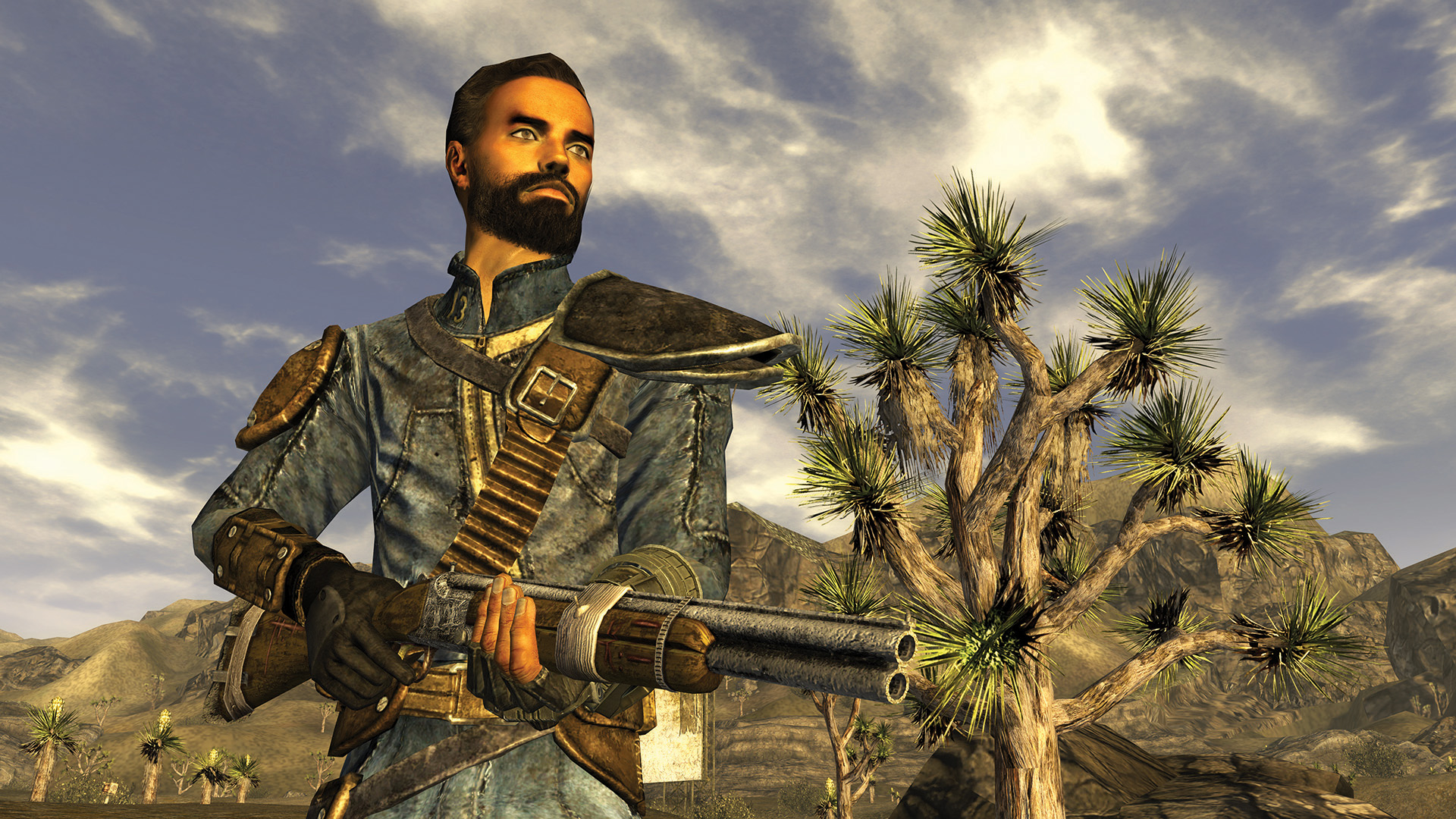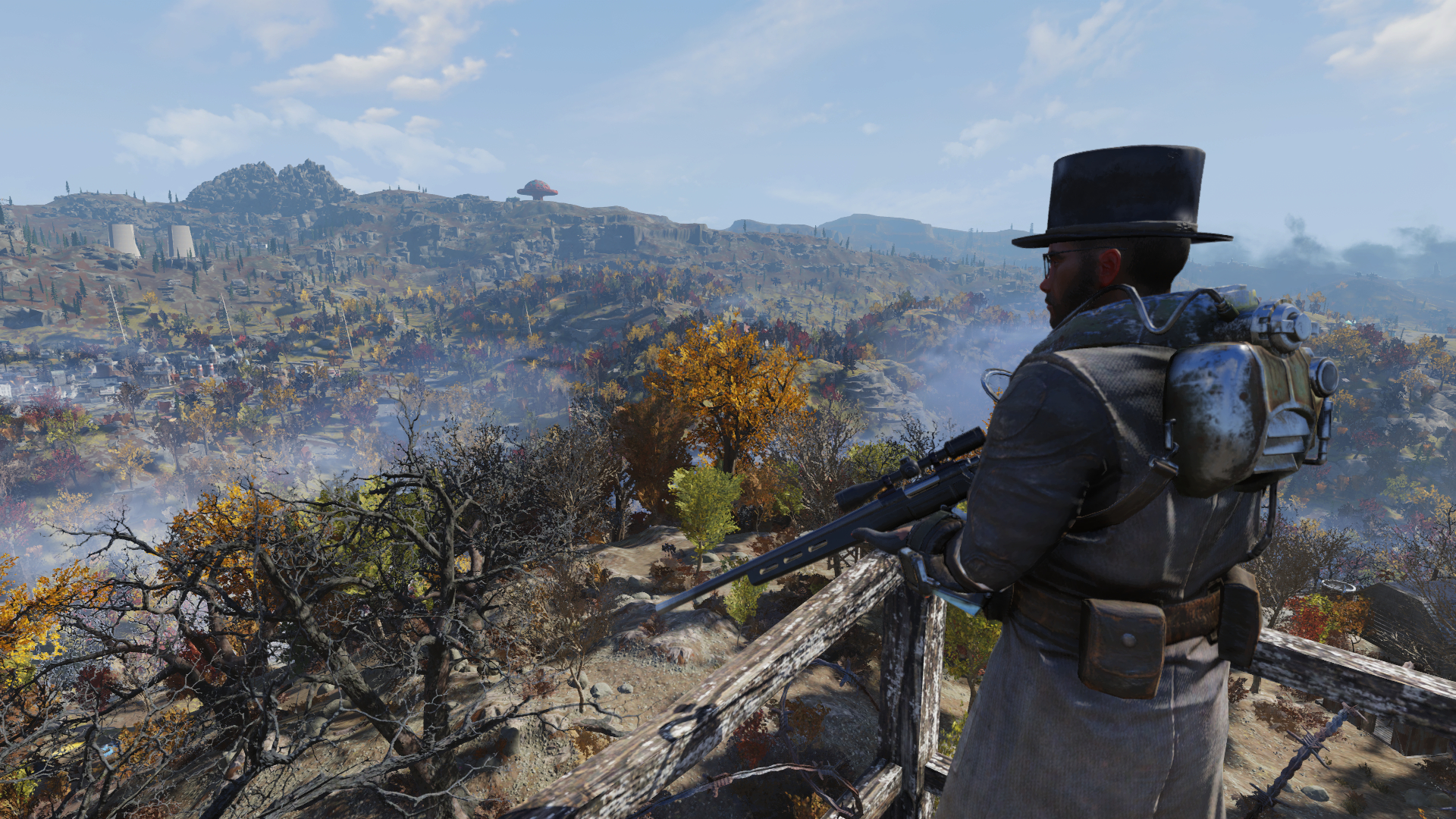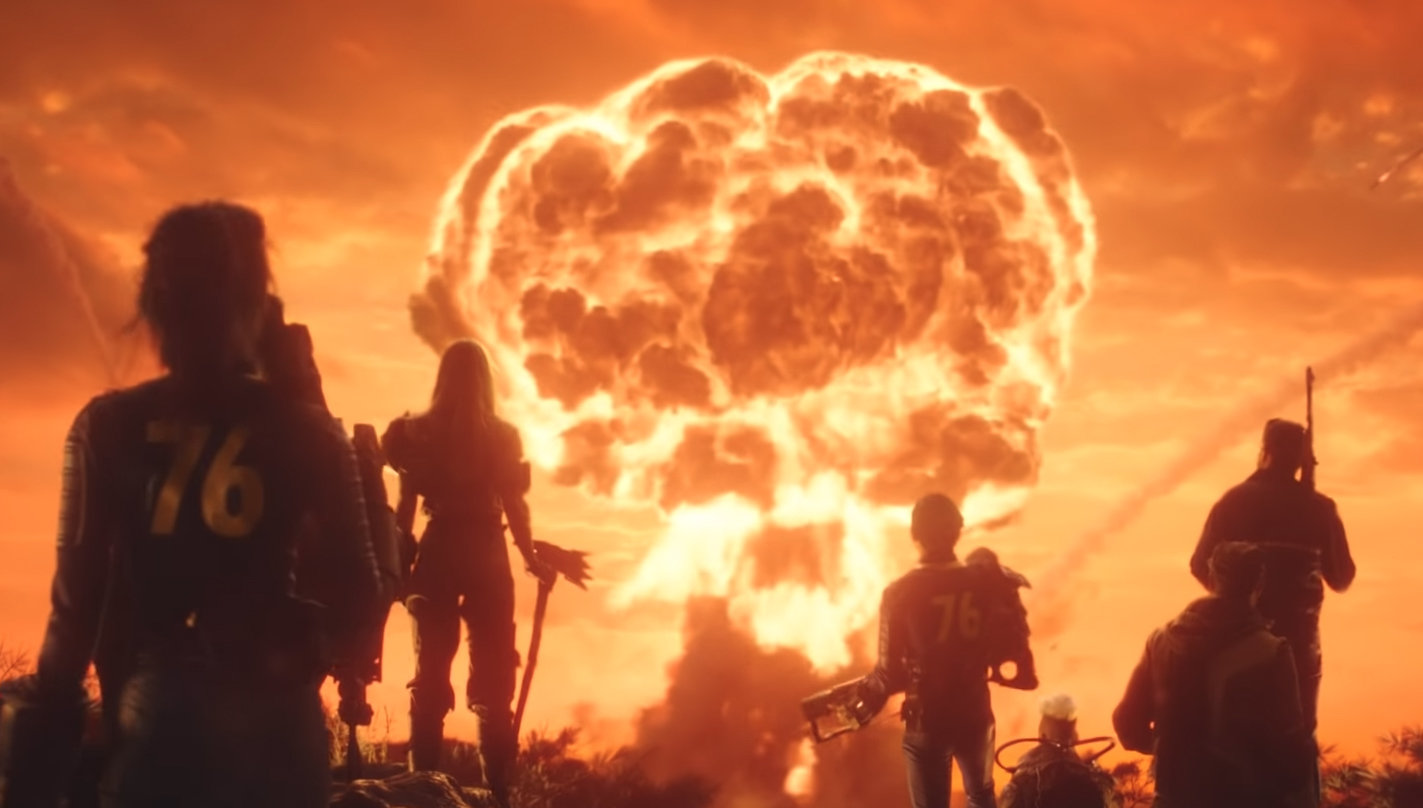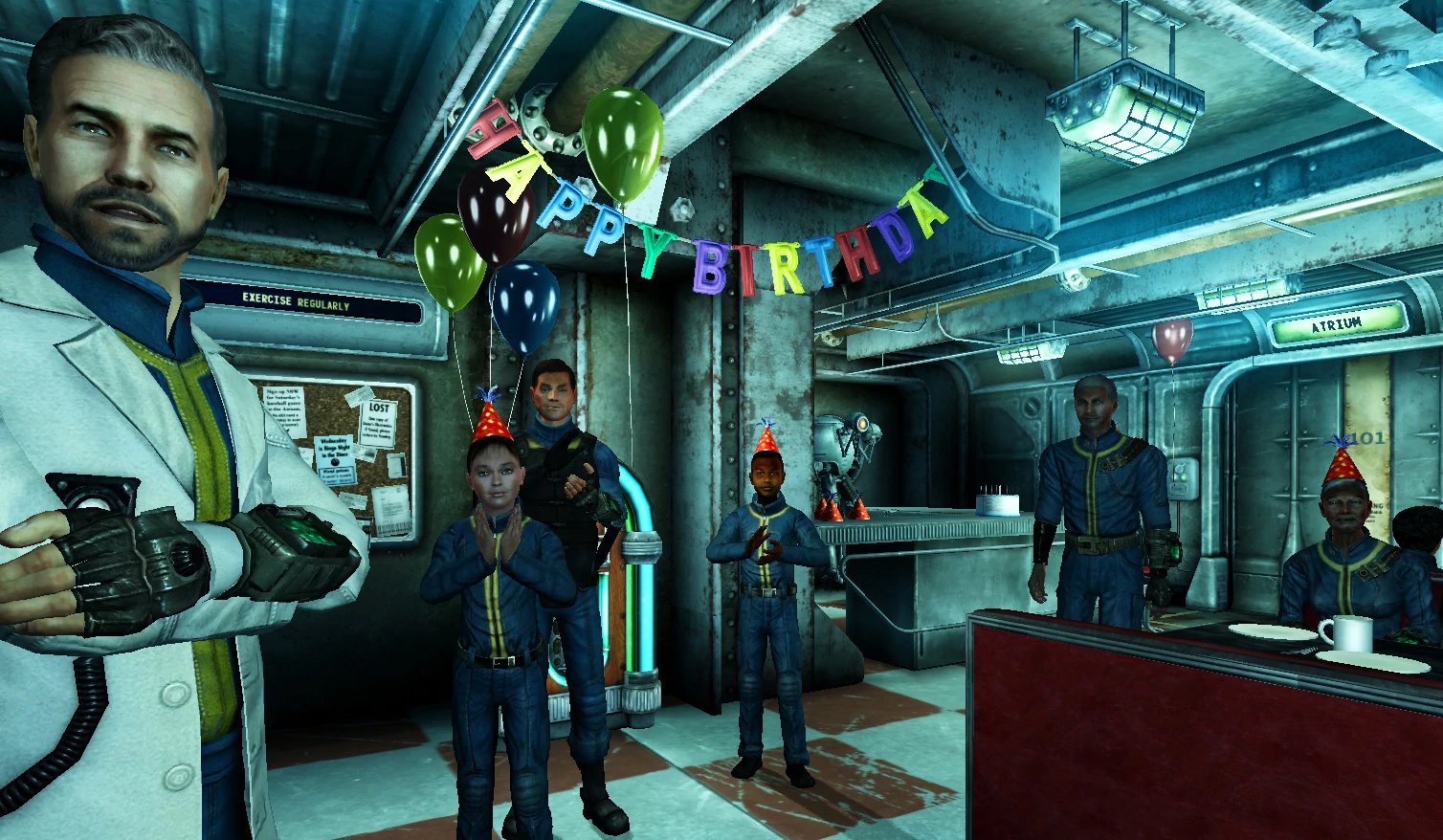The complete history of Fallout
Who knew the end of the world could be so full of life?

“The biggest problem was just scope,” Chris Avellone explains. “The game was too big and there was too much added in the timeframe—and as we neared the ship date, the game still had a lot of bugs that were unaddressed.” Patches came, but they impacted the upcoming DLC, which required more work—and the pattern repeated. “It was even more difficult than it sounds,” he continues. “Because the patches and the fixes became moving targets as balancing changes started getting introduced with patches, and sometimes those would break critical path quests.”
New Vegas was riddled with bugs, and received extensive criticism at launch for this. And then there was the infamous Metacritic scoring incident, where Obsidian apparently only received royalties for achieving a Metacritic rating of 85 or above. New Vegas ended up on 84.
Despite all of that, New Vegas went down as a cult classic and has, over the years, cemented itself as the best in the series for a certain subsection of the Fallout fanbase. Fixed with subsequent patches and built upon with some genuinely brilliant DLC expansions, New Vegas served as the balance between Bethesda’s new 3D approach, and Black Isle/Interplay’s focus on traditional RPG mechanics. But the experience was fraught, and Obsidian’s crack of the whip proved a one-off.
Bethesda did of course return to the sci-fi series with Fallout 4—another step away from the pure form of the original, bringing in elements of construction and crafting. While well-received in its own right, the fourth game was never going to hit all the right notes with the old school purists. A good game? Definitely. A great Fallout game? That’s up for debate.
Fallout is a series that has changed a gigantic amount since its inception—possibly more than any other series in gaming. At the same time, however, its central themes of the apocalypse, the fundamental nature of humanity, and the need for some sturdy rope in a survival situation have all passed through the decades to make up core tenets of the series. It’s different to what it used to be, but it is still loved—even by the creator who abandoned it: “Fallout will always be my baby, even if it was adopted by another family,” says Tim Cain.
An additional bonus of Fallout’s success has been the resurrection of the series that inspired it. Brian Fargo’s current studio, InXile, was able to crowdfund Wasteland 2. “Everything I learned from Wasteland I put into Fallout and everything I learned from Fallout I put into Wasteland 2,” Brian Fargo tells us—back in 2014, and at the time of writing work is underway on Wasteland 3, with none other than Chris Avellone contributing. “[There’s a lot of Van Buren in] Wasteland 3,” he says, “We used a lot of the pillars of Van Buren to guide design decisions in tandem with the Lead Designer, George Ziets, who took the high-level concepts and then made them appropriate for the Fallout universe.”
Meanwhile, Bethesda has knocked together something we never thought we’d see: an online version of Fallout. Bringing together multiplayer and the wasteland is something that’s been talked about—and tried—since day one, but it took some 21 years to make it happen. Fallout 76 is a flawed effort that falls short of its potential, but the series is too popular not to survive that. Fallout's return in singleplayer form will likely come after the upcoming Starfield and Elder Scrolls 6, both of which will eat years of Bethesda's time. We look forward to the day the series sets the world on fire again.
Keep up to date with the most important stories and the best deals, as picked by the PC Gamer team.

Survivors of the apocalypse
Humans
Not just your regular folk, but dwarves, beastfolk and swamp people, among others. Humans are the most widespread species of the post-apocalyptic futurescape, even though it was humans who caused all of this nuclear nonsense to begin with. One thing’s for sure in the wasteland, though: human nature isn’t very kind.
Ghouls
Folks who forget to slip, slap and slop with their factor 5 million in the wasteland end up a little worse for wear as irradiated, skinless ghouls. Many you encounter maintain their faculties and operate largely as normal human beings. For some, prolonged exposure to radiation has eaten up their brains, and they roam the lands as feral zombies.
Super Mutants
Humans ‘dipped’ into Forced Evolutionary Virus (FEV) goo sometimes—not always—result in super mutants: gigantic brutes, usually dumb, sometimes smart, always extremely dangerous. A mainstay of the series since day one, super mutants tend to be on the antagonistic side of things, but every now and then you get a friendly one.
Robots
Robots come in all shapes and sizes and are everywhere throughout the entire series, friend or foe, and the Fifties sci-fi feel of Fallout is helped a great deal by them—none more than by the Protectrons: your standard security bots who just happen to look strikingly like Forbidden Planet’s Robby The Robot.
Aliens
It wasn’t until the third game that the aliens made an actual, living appearance, but plenty of spaceships of theirs crashed across the wasteland from the first game on. Intelligent and cunning, these blighters are as mysterious as they are rare—though the rumblings are they could have been behind the Great War.
Synths
The post-apocalyptic kids on the block, synths are one of the few new technologies to arise after the bombs have dropped. Based on prewar technology, synths were created to mimic—and be indistinguishable from—humans. Nick Valentine, arguably Fallout’s greatest companion, is a synth, though it’s quite easy to tell.

Weird wastelands—Fallout's easter eggs
UFO crash
Fallout 1-4, New Vegas
If there’s a Fallout, there’s a UFO crash somewhere along the way. And usually sweet alien loot to bag, like the awfully useful and high-powered Alien Blaster. Keep on crashing, alien friends.
Raider of the lost fridge
Fallout: New Vegas
A more realistic recreation of the scene we’ve tried to burn from our memories, in which Indiana Jones hid safely from a nearby nuclear explosion inside a fridge. In this version, all that’s left is a skeleton and hat.
Don't panic!
Fallout 2
The Hitchhikers Guide To The Galaxy is your usual reference point for ultranerds, and Fallout 2 is no exception. The whale has fallen from a great height, though that’s not what killed it – it was the sudden stop.
Old-ish Scrolls
Fallout: New Vegas
An acknowledgement of where the modern Fallout games owe a lot of their existence: some lampposts in Freeside have ‘TES-04’ engraved on them, referencing the then-upcoming Elder Scrolls IV: Skyrim.
The other guys
Fallout 3
For all the legal issues and a certain fall from grace, Bethesda still managed to give props to original publisher Interplay with this structure looking the spitting image of the latter’s logo. Just don’t mention Fallout Online.
Monty Python
Fallout 2
You run into odd folk in the wasteland, like a bunch of so-called knights headed by a chap called Arthur on their way to find a ‘holy hand grenade’. You can pretend to help, but they still don’t know where the GECK is.
Mad Max
Fallout 1-4, New Vegas
The leather armour in the Fallout series is synonymous now with the games that it’s easy to forget it was based on the outfit worn by Max Rockatansky in the Mad Max films. Shame that the Interceptor doesn’t show up, though.
The Tardis
Fallout
To say this encounter is a bit on the nose is an understatement: you’re in the wild, you stumble upon an old police box, its light starts flashing and it fades from the scene. You just got Doctor Who’d, kid.

Apocalypse Now—where Fallout takes place

Nuked—the cancelled games of Fallout
Fallout Extreme (PS2, Xbox)
Cancelled: 2000
A tactical shooter playable from a first or third-person perspective, Fallout Extreme never made it past the conceptual stage. Which is a shame, as on paper it sounded like Hired Guns in the Fallout universe. The planned storyline would take players outside of the US, into territories such as Russia, Mongolia and—ultimately—China, marking the first time a Fallout game would have left the States. Extreme was cancelled after little more than an outline and some concept sketches were made.
Fallout Tactics 2 (PC)
Cancelled: 2001
Around the time the original Tactics released, preproduction work began on a sequel. Sadly sales of the first game weren’t up to expected levels, and Interplay cancelled the project. Surviving today are some sketches of mutant crocodiles—it would have taken place in areas such as Florida—and a general idea behind the story, which would have incorporated an irradiated GECK. The resultant mutated Garden Of Eden would have been a cool twist on Fallout’s eternal quest to restore a perfect world.
Van Buren (PC)
Cancelled: 2003
Created using the engine Black Isle made for Baldur’s Gate 3 (also cancelled), this original incarnation of Fallout 3 was under the stewardship of eventual New Vegas alums Chris Avellone and Josh Sawyer. Set across Arizona, Nevada, Colorado and Utah, the game would see players in the role as a prisoner and some tweaks to established systems, like SPECIAL. A tech demo was released, but ultimately Interplay decided to channel funds towards Icewind Dale instead, and the project died.
Fallout: Brotherhood of Steel 2 (PS2)
Cancelled: 2004
A bit of a double-edged one this: it’s sad that BOS2 never released, as it was close to completion when development was shut down thanks to Interplay layoffs. On the other hand, the first game was pretty much awful, so it doesn’t feel like the greatest loss. The sequel did feature elements like Caeser’s Legion and the Jackals—both borrowed from Van Buren and both making an appearance in New Vegas—as well as another appearance of the irradiated GECK. Still, it wasn’t to be.
Project V13 (PC)
Cancelled: 2012
V13 was the name of two projects from Interplay and a reformed Black Isle Studios. The first was an MMO, Fallout Online, which was put together by Masthead Studios with Interplay as publisher—a legal dispute from Bethesda popped up, and the project was cancelled. A second attempt saw V13 rebranded as nothing to do with Fallout, tried to raise money via crowdfunding, then quietly disappeared some time after with nothing to show for it.


